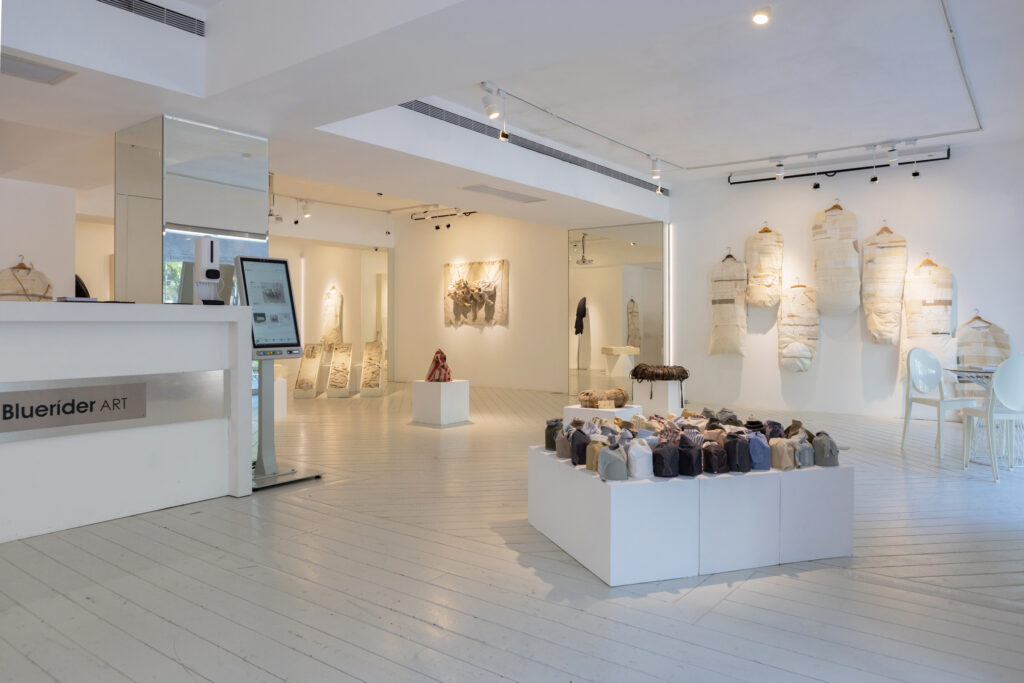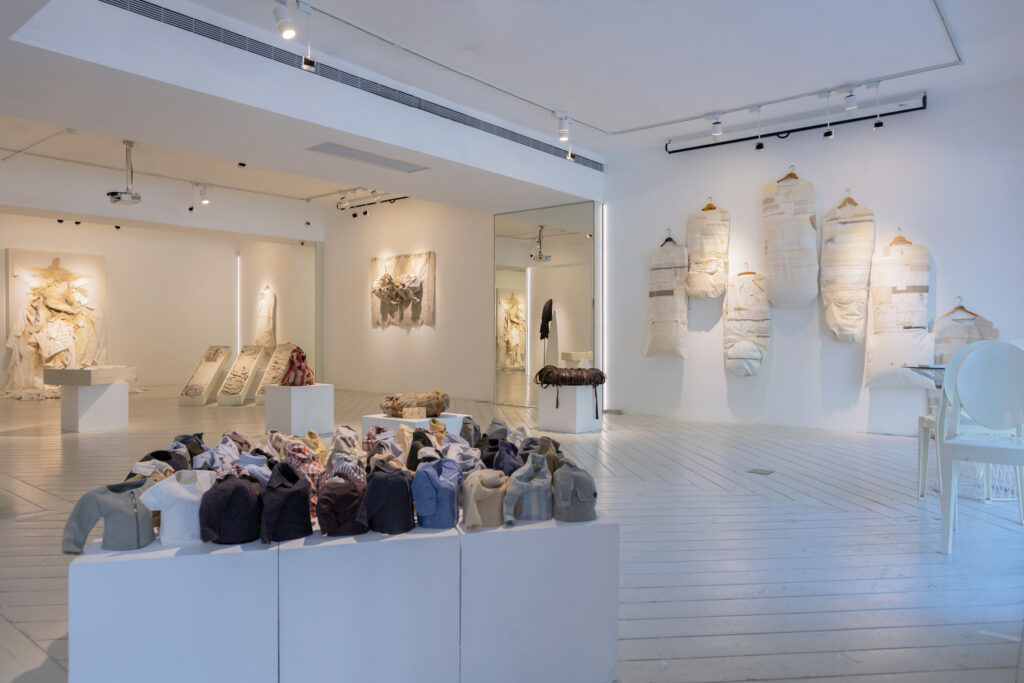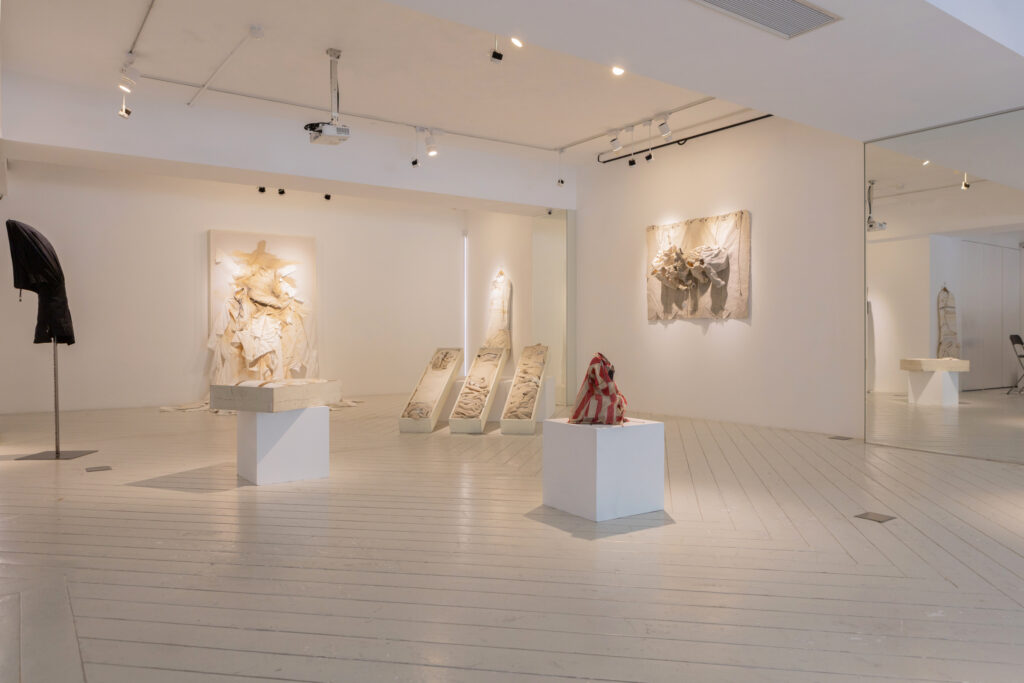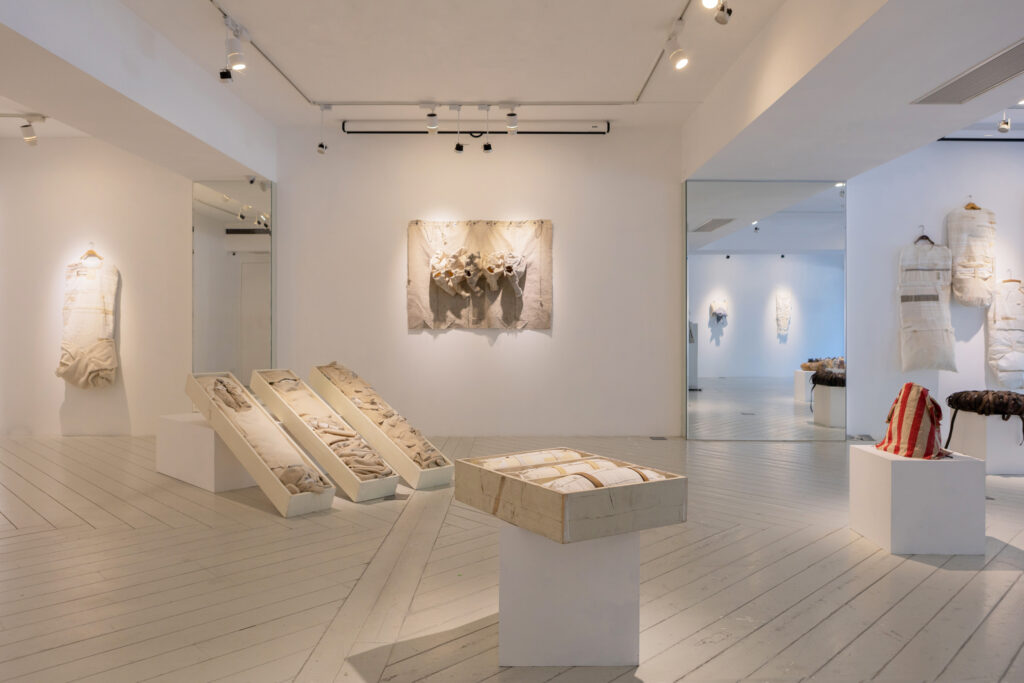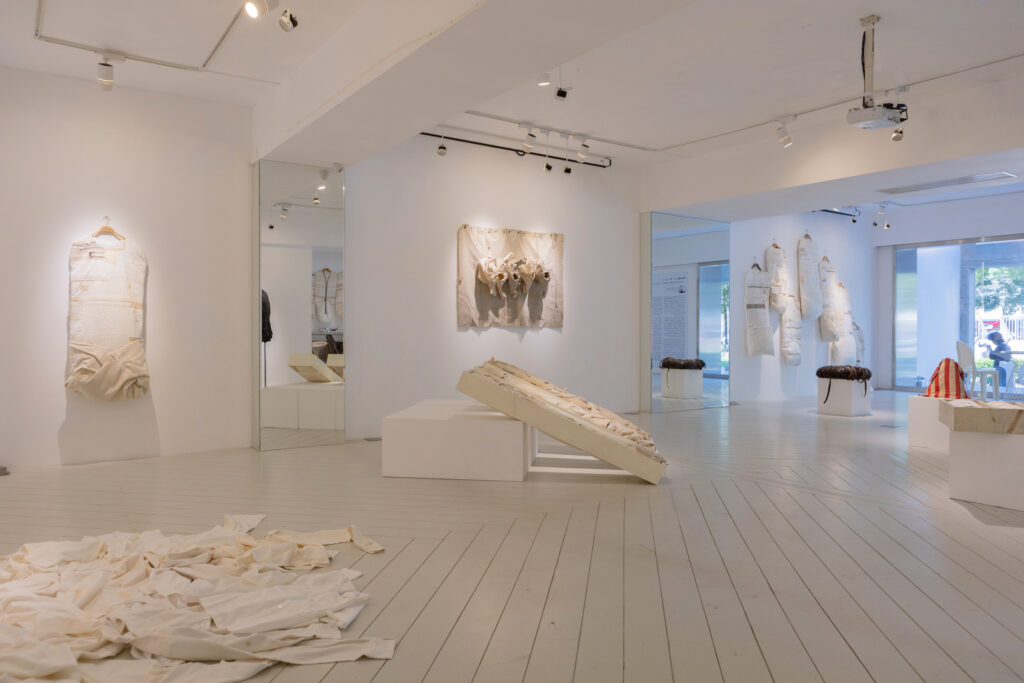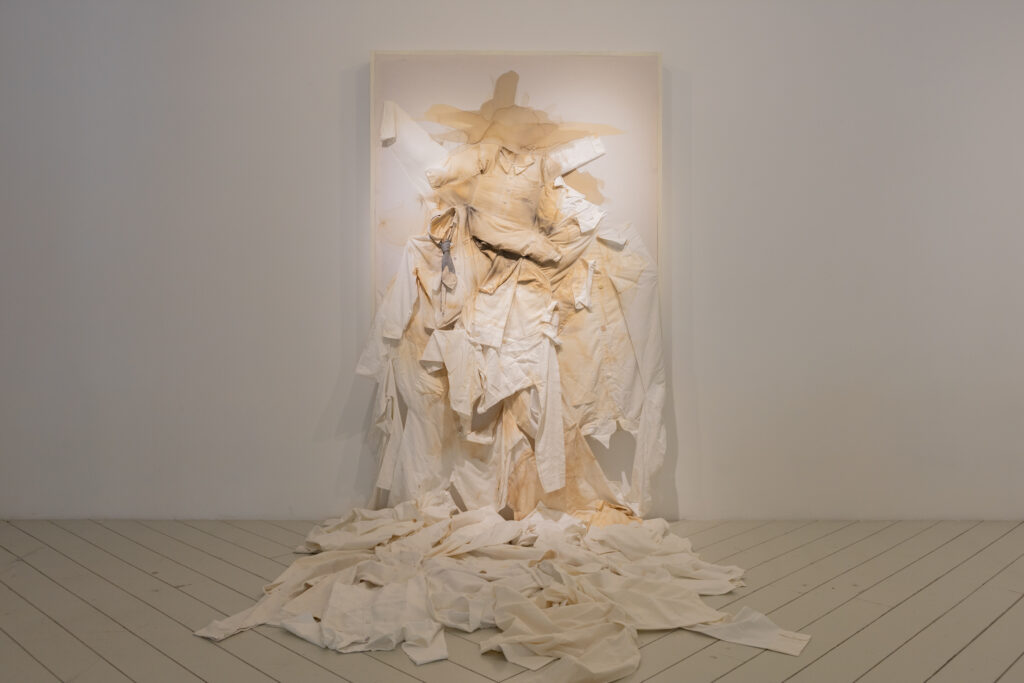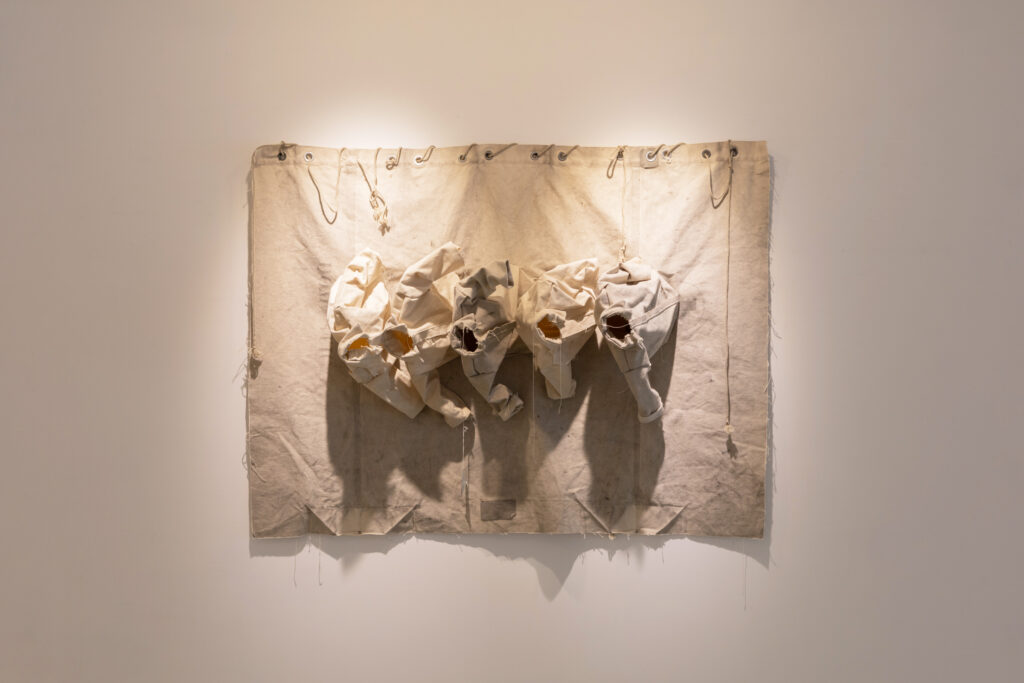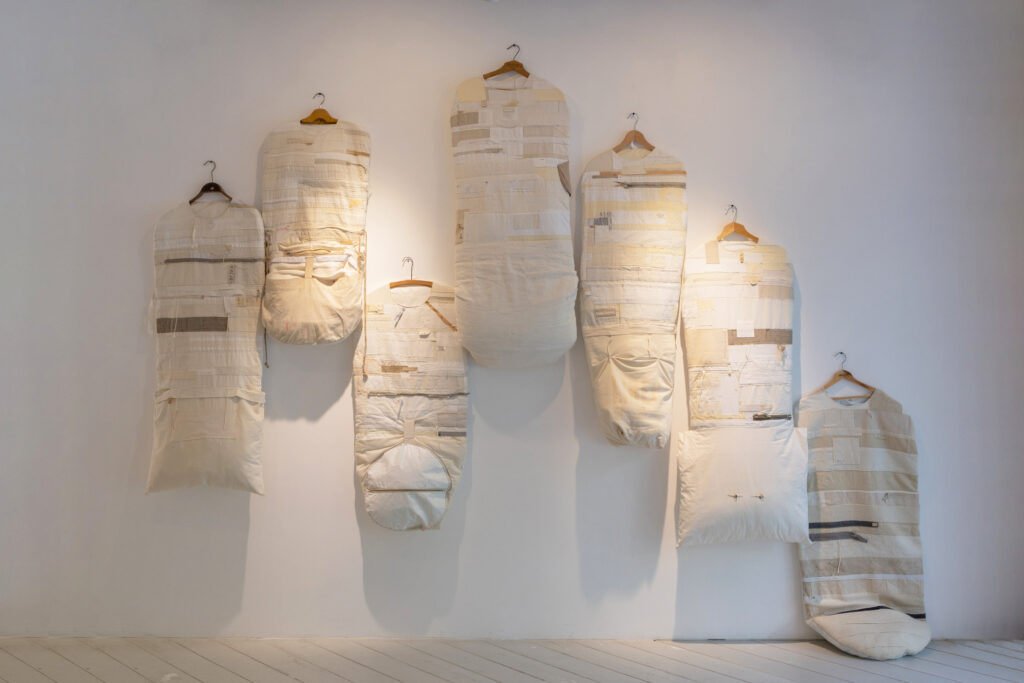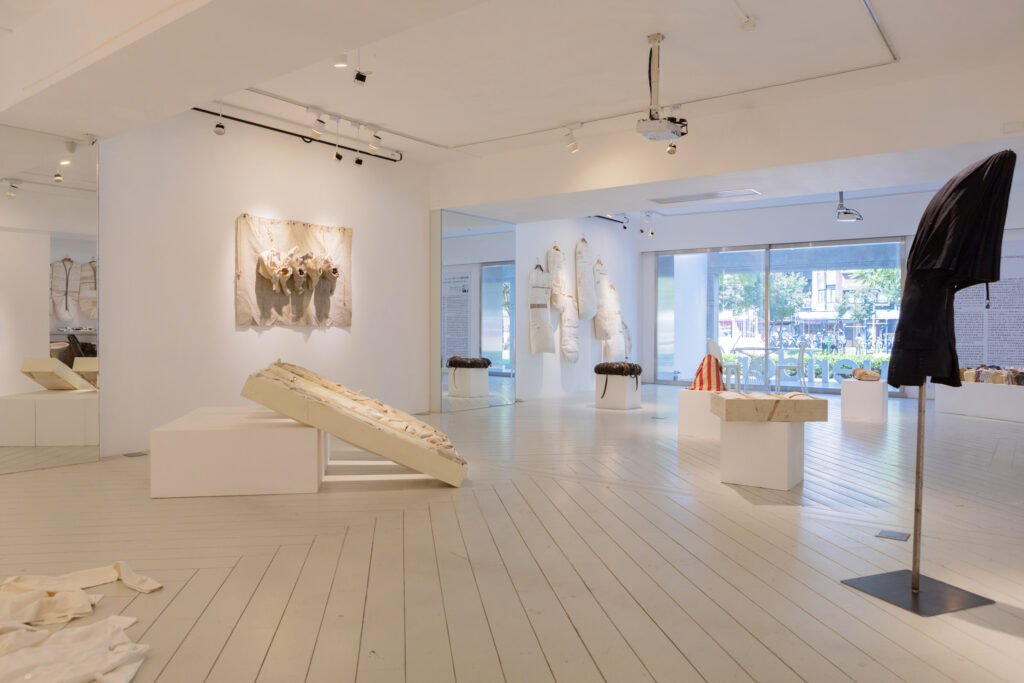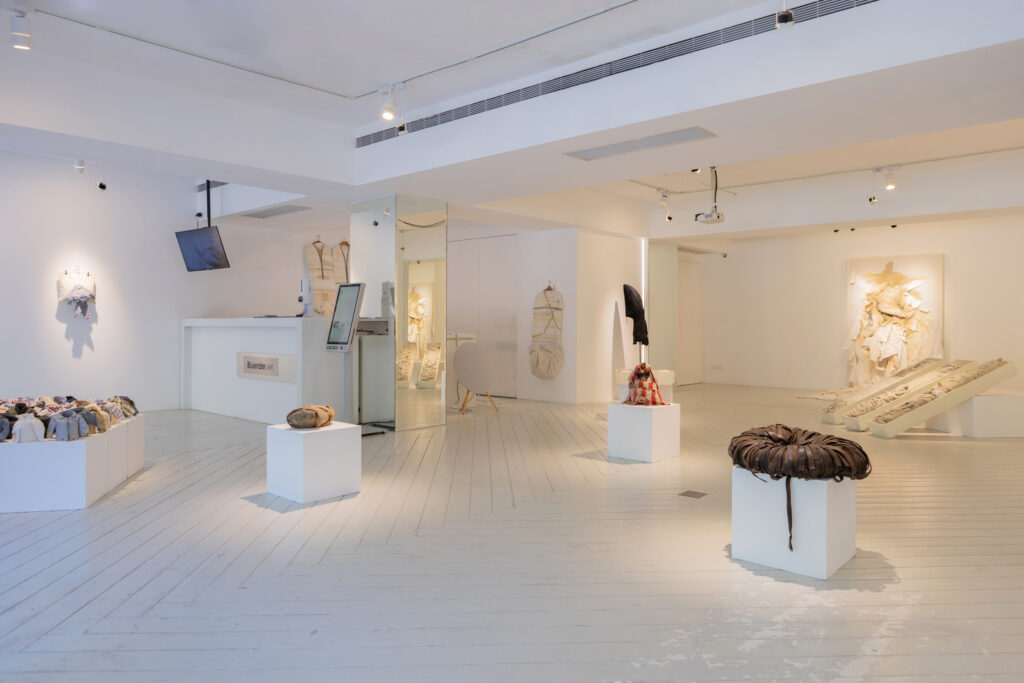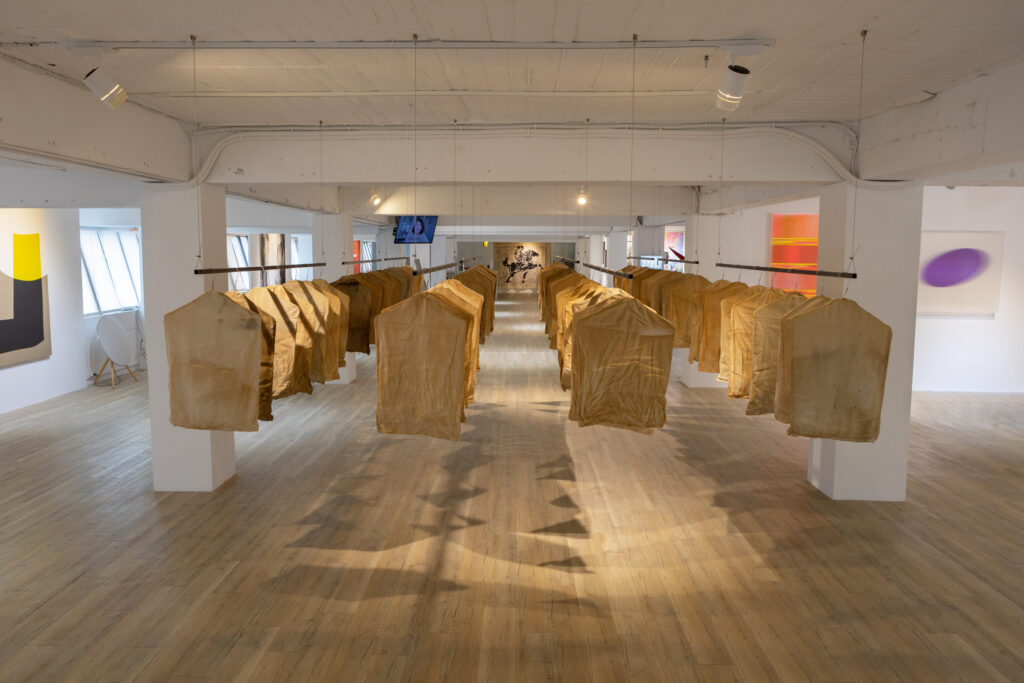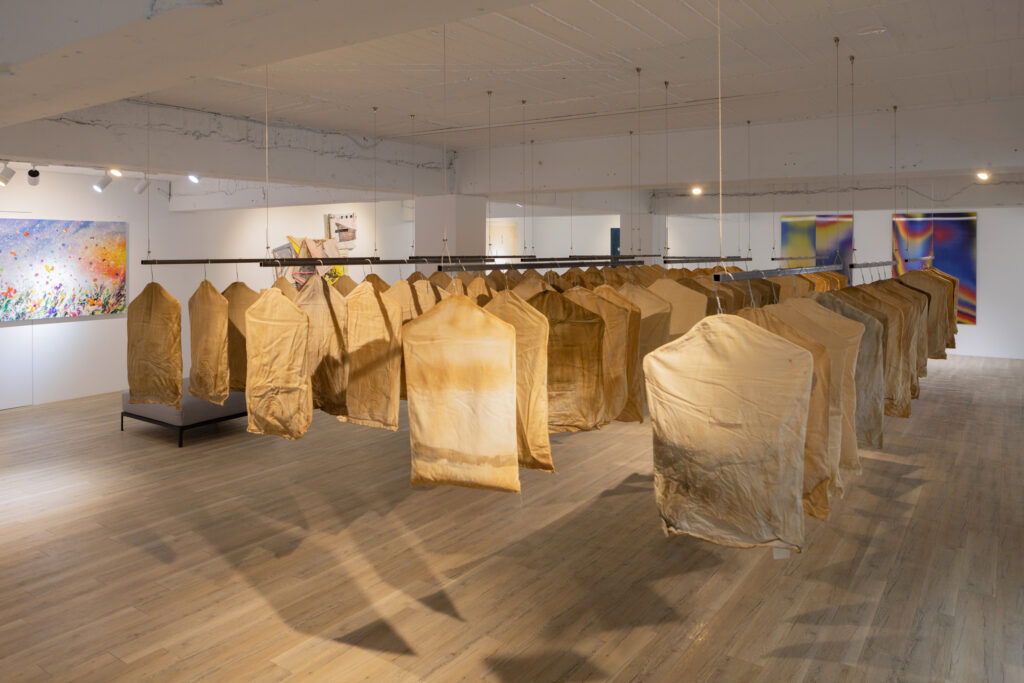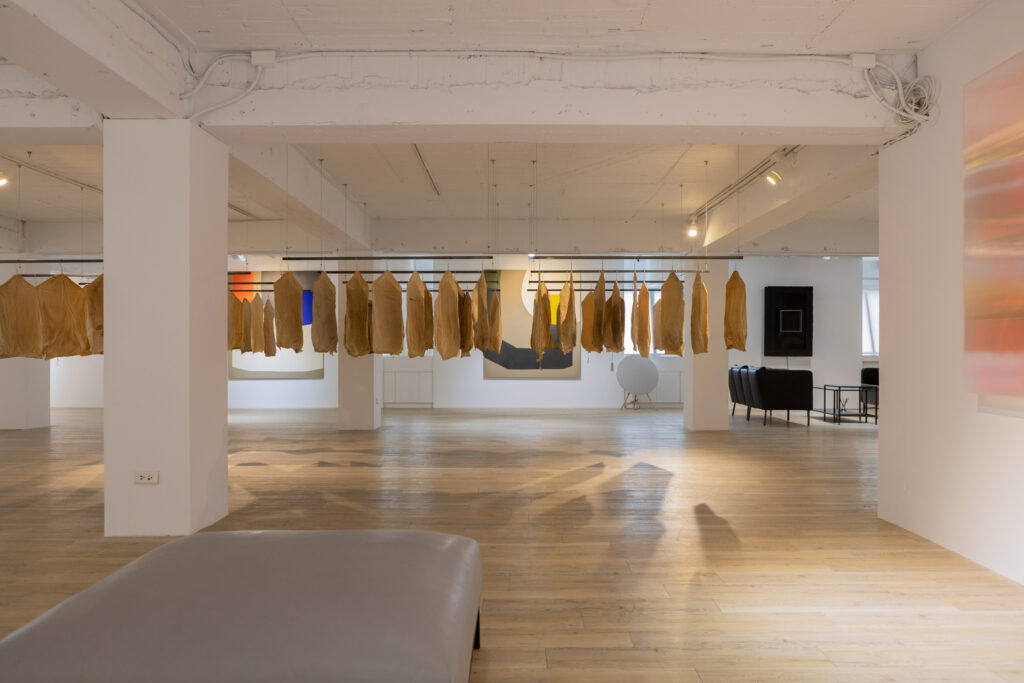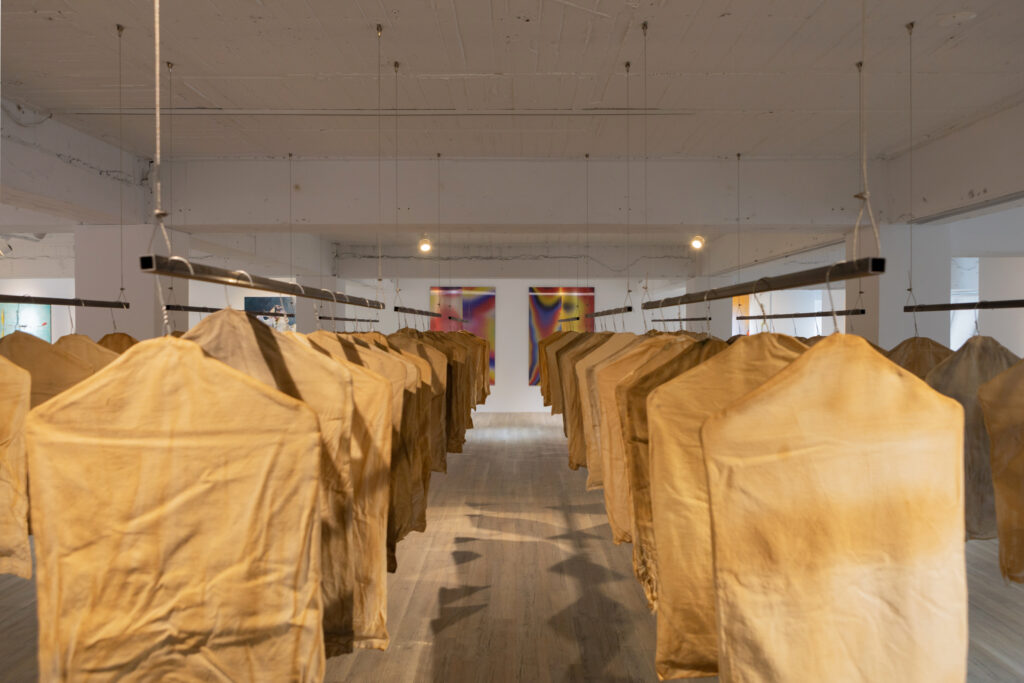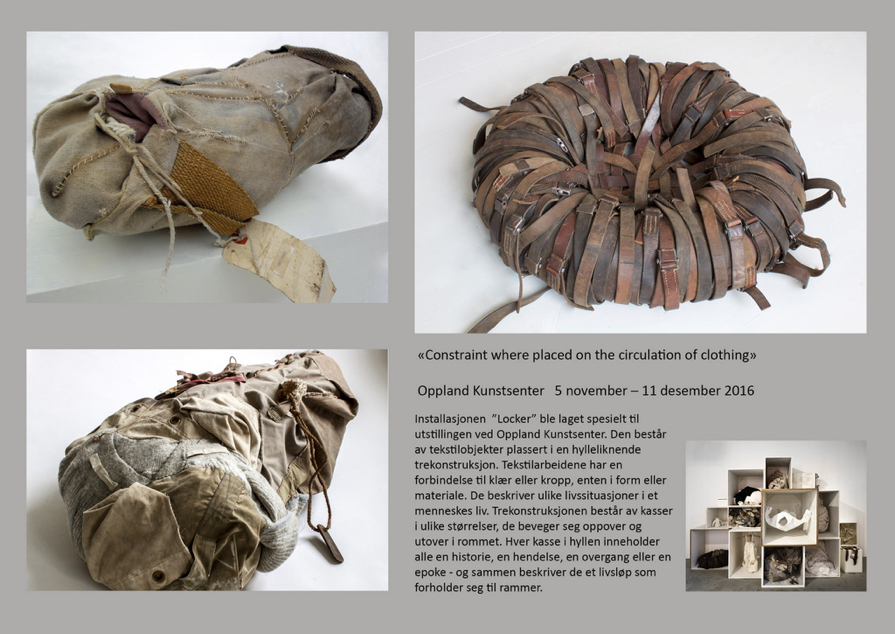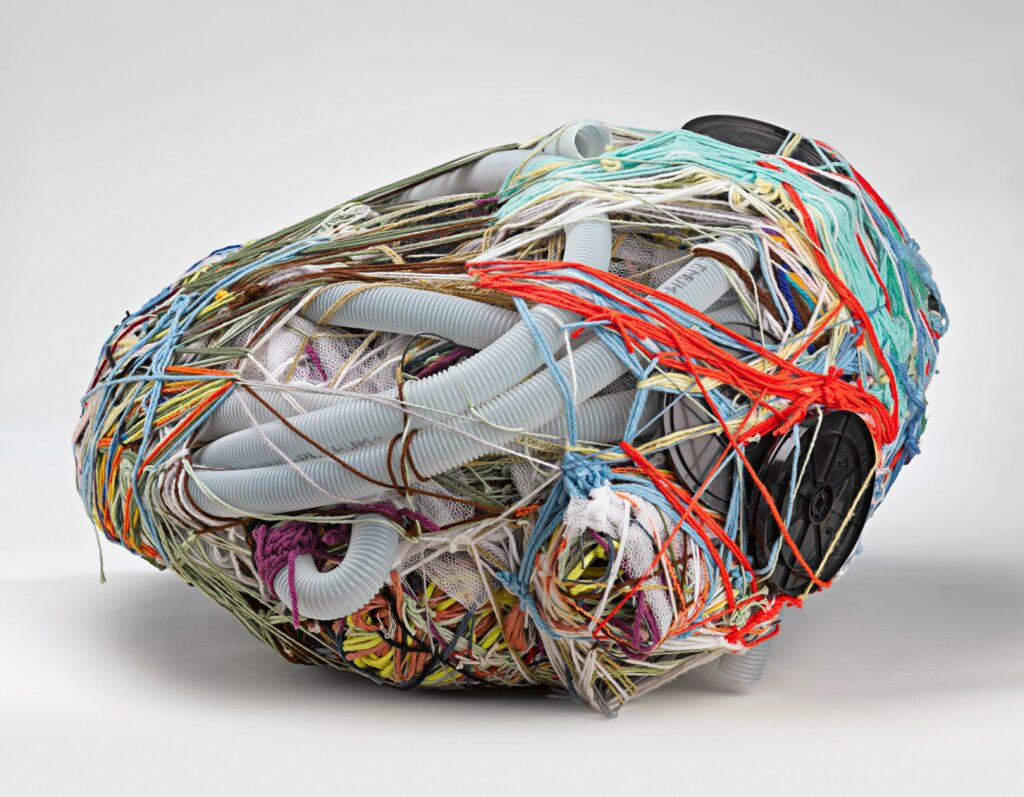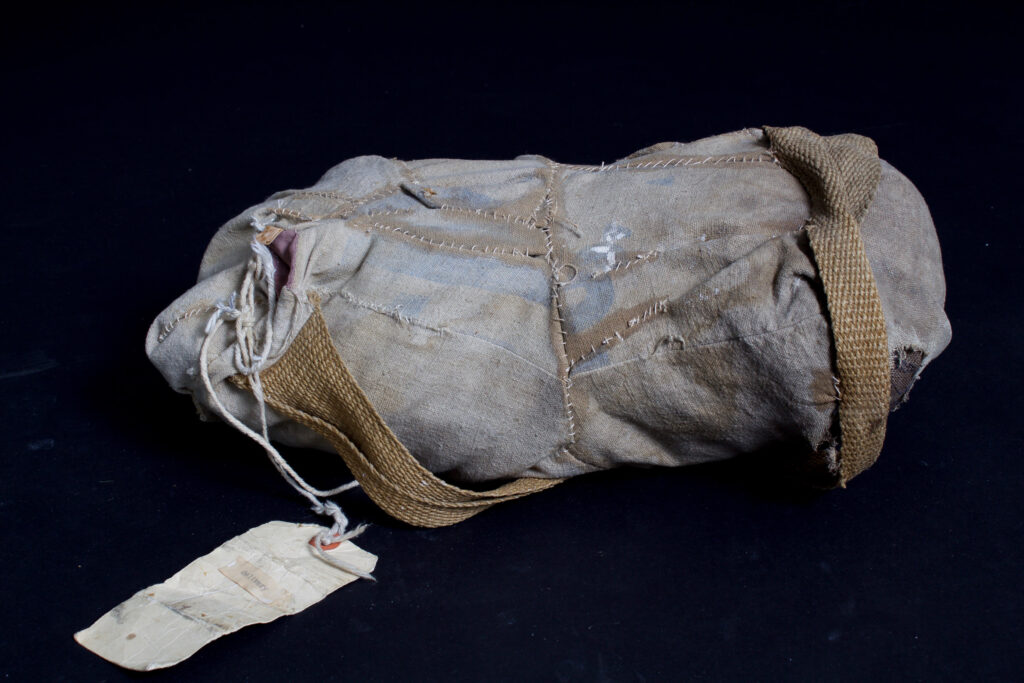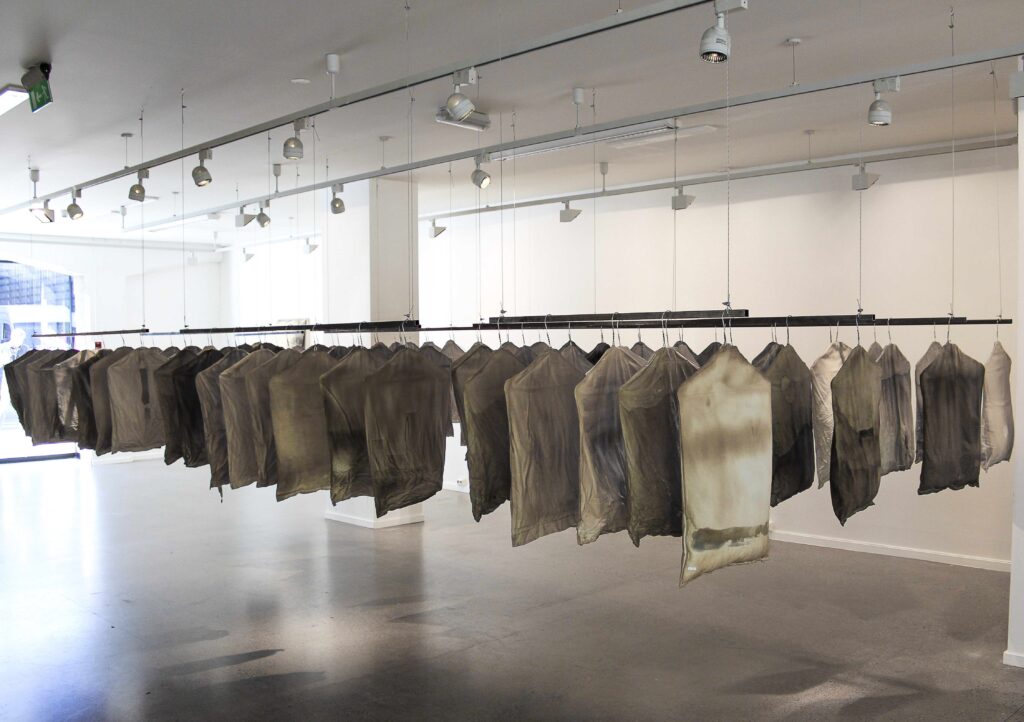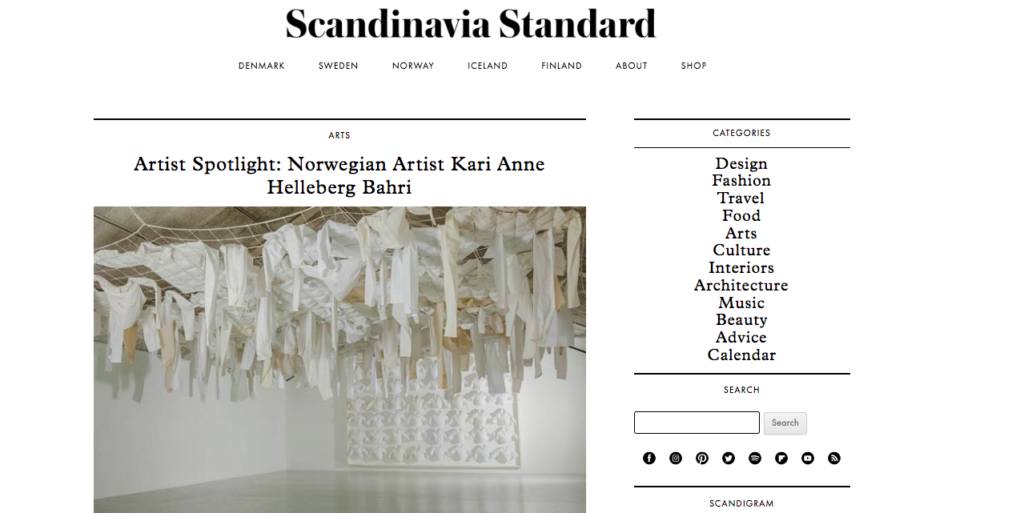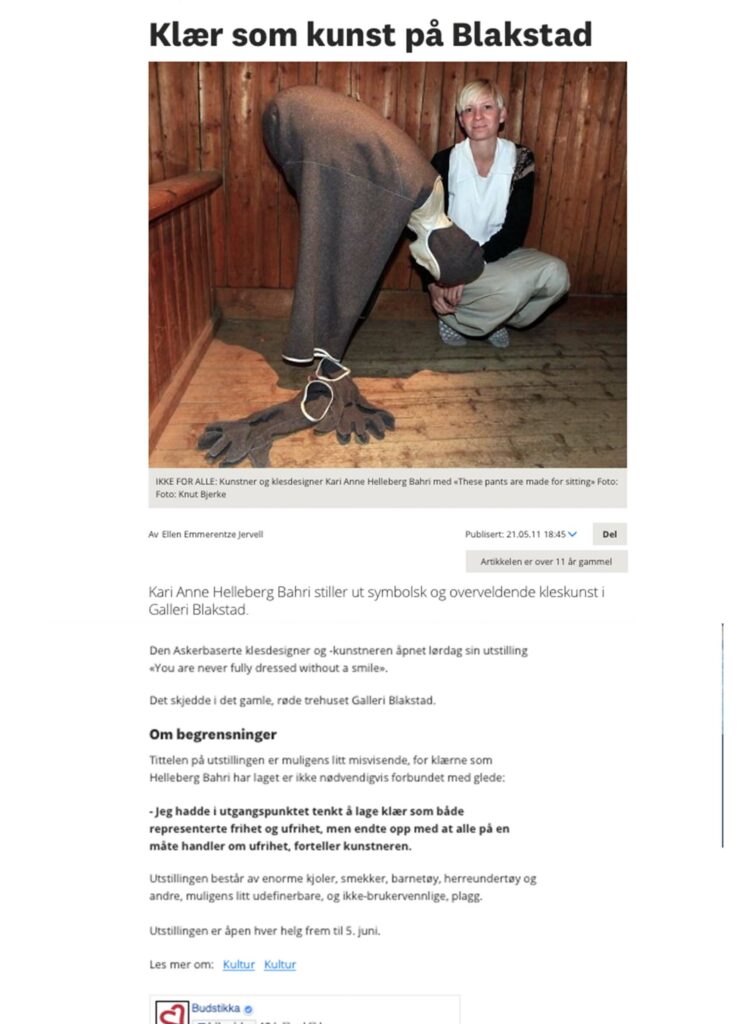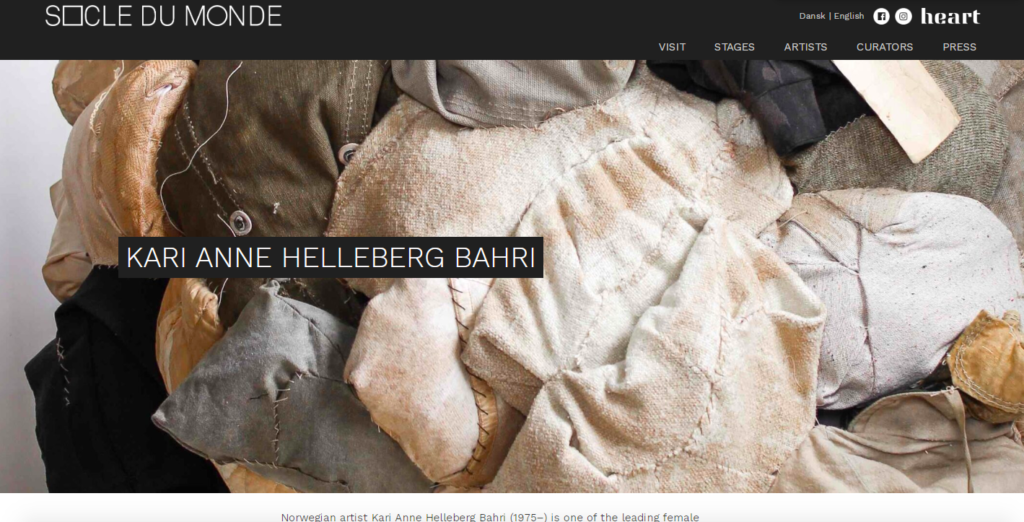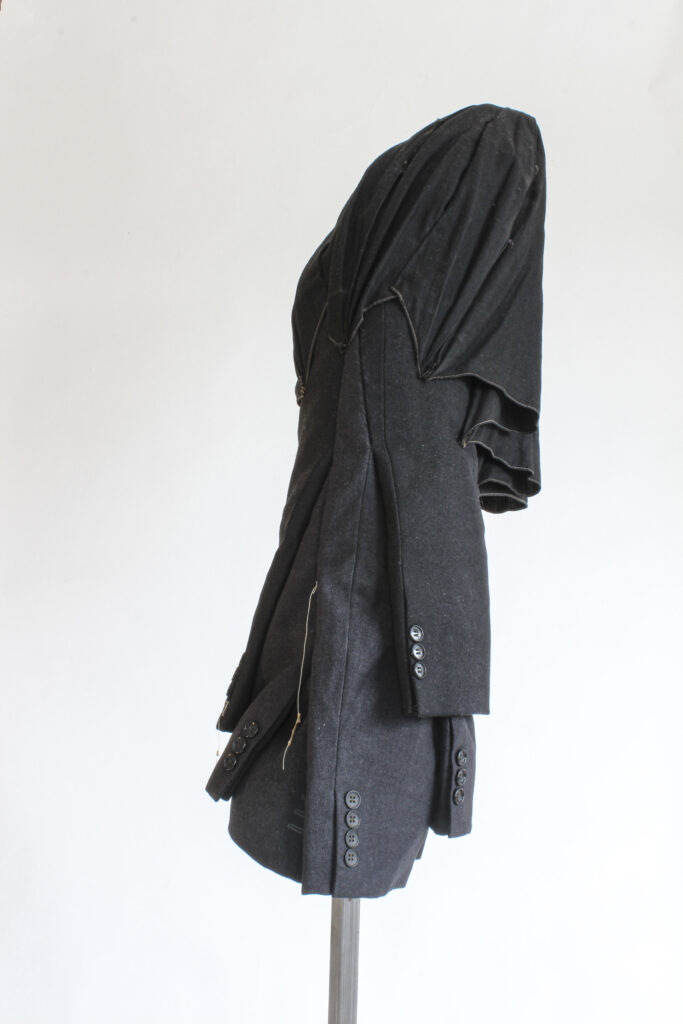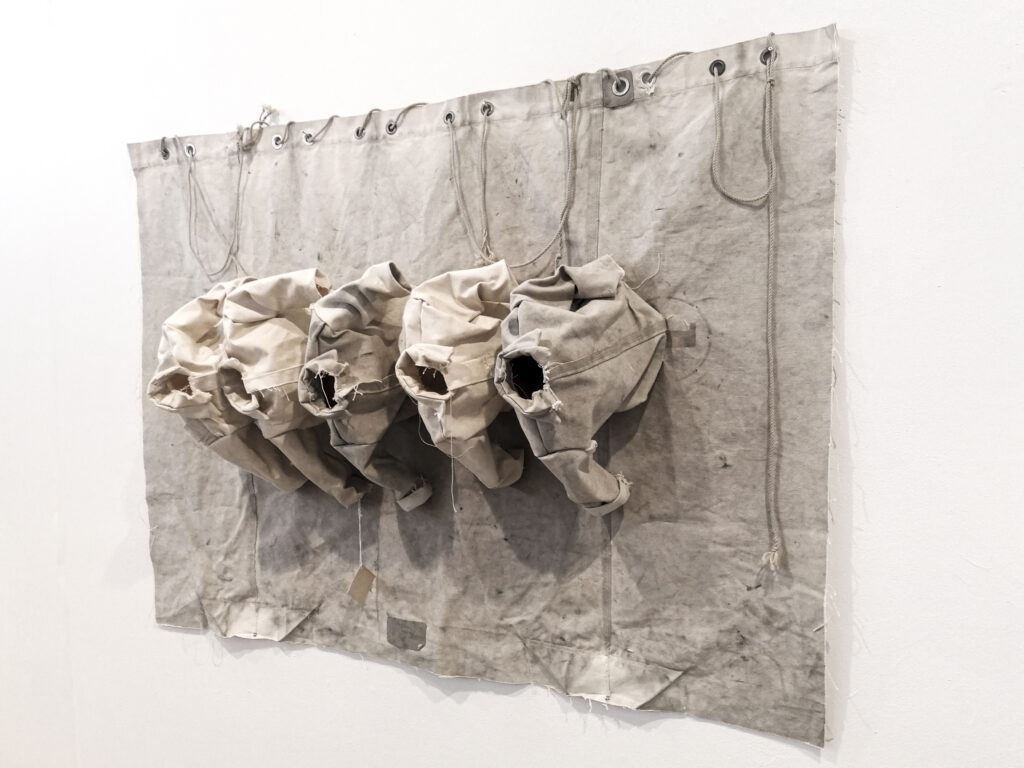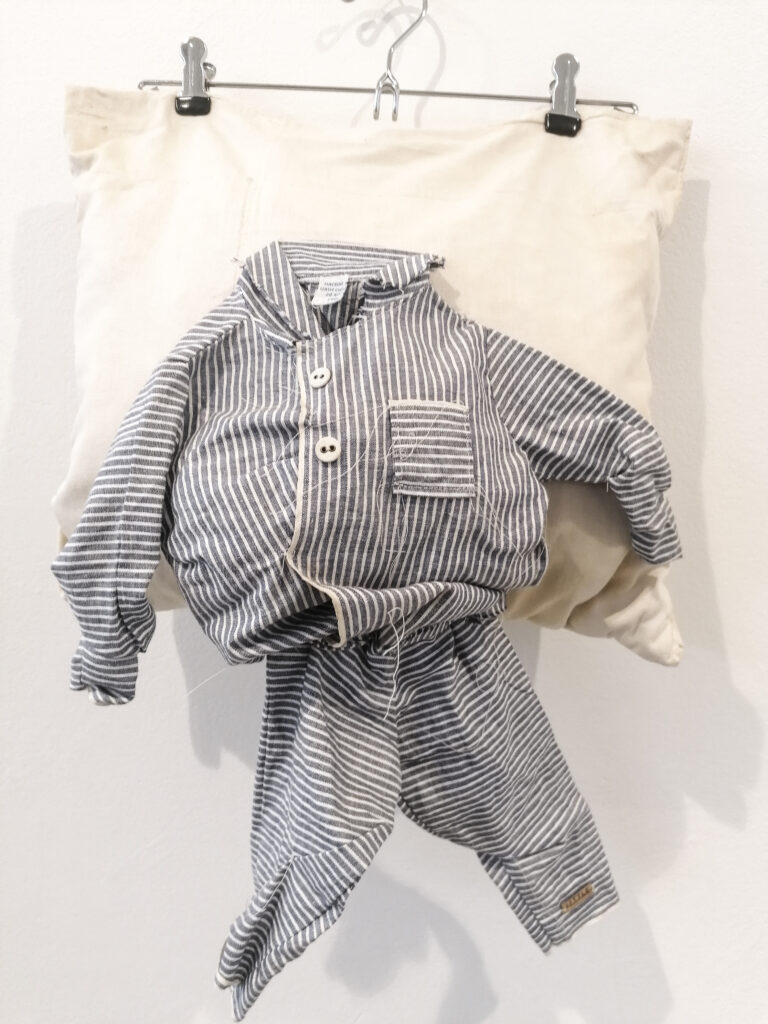看展覽 Exhibition
預告片 Trailer
藝術家訪談影片
展場影片
展場照片
Bluerider ART
「縫合 Sew up」
卡里.安妮.赫勒伯格.巴赫里Kari Anne Helleberg Bahri
亞洲首個展 台北.敦仁|台北.仁愛 雙館呈現
卡里.安妮.赫勒伯格.巴赫里Kari Anne Helleberg Bahri (挪威, b.1975),畢業於挪威奧斯陸國家藝術學院服裝設計(National Academy of the Arts, Oslo),自小在充滿創造力的環境長大,跳脫典型挪威式極簡風格,承續北歐憂鬱冷冽的氣質,融合服裝工藝,利用舊衣、碎布、殘片織品,混亂中透過解構、縫合、再造,賦予作品新意象,以中性色彩的織品藝術(Textile Art) 探討當下社會集體的限制、期待、秩序、孤立議題,形成個人獨特風格。曾於挪威Kunstmuseet NordTrøndelag、Danubiana Meulensteen Art Museum等美術館、及丹麥Socle Du Monde雙年展展出,作品由Kongsberg Municipality,Den Norske Husflidforening等機構永久收藏。
卡里.安妮.赫勒伯格.巴赫里Kari Anne Helleberg Bahri童年因家境不富裕,裁縫師的母親常以舊衣物等易取得的布料材質進行設計,化腐朽為神奇,深深影響巴赫里Bahri對於織品興趣,驟逝的父親令她陷入孤立沈默、自我懷疑、感覺身體被牢籠所困,而唯有透過將碎片舊布、織補縫合再創造的過程,才找到可以發聲的方式。母親對她是媒材的啟發,而父親意象則反覆出現在她的創作內容中。她曾表示:「我運用衣服和布料做為溝通的語言,解放它們包裝身體的功能。」織布,有溫度的材質,衣物作為遮蔽身體的物件,與個人肌膚有著最親密的接觸,一旦新衣穿過之後,就不再是全新狀態,個人的心智狀態與情緒,都會在衣物上留下時間痕跡,它是自我私密的對話,同時也是個人對外標誌著自我於社會中的形象。
巴赫里Bahri善用手工縫製方式,與收集來的織布長時間相處,發掘纖维的細節,通過天然的棉、麻、毛料材質,選擇白色、或中性色彩呈現,認為藝術通常呈現生命中較沈重的層面,使用中性色彩可以不被愉悅或悲傷的情緒干擾影響,可以解放禁錮的身體,跳脫自我設限的困境,進而創造獨一無二的生命故事。以織線為畫筆,創作探討當下社會群體的限制(Limitations)、秩序(Restrictions)、期待(Expectations)、孤立(Isolation) 等議題,藉由現成物的混亂、被拋棄、瑕疵、腐朽、不完美的重新詮釋再造,提供觀者跳脫自我圈圈,立於客觀位置反思記憶經驗,從這樣的位置激發「過去我是誰」、「未來我是誰」、「我可以成為誰」的自我對話、思辨認知和妥協的過程。
二十世紀的織品藝術(Textile Art),藝術家運用纖維的韌性及織物連結身體的親密感,表現自身的立場,並與傳統的編織工藝做出區隔。德裔美國藝術家安妮・亞伯斯Anni Albers, 是第一位打破藝術與工藝界線的藝術家,她利用織品纖維的特性讓天然材料、合成線、金屬塑料融入掛毯作品,研究畫面的幾何佈局與畫面平衡,美國藝術家茱蒂絲・史考特Judith Scott以織品纏繞包裹作品聞名,創造一系列的日常生活的物件,鑰匙、塑膠管或購物車,線性圍繞狀態暗示著儀式與遊戲的過程。當代日本藝術家塩田千春 (Shiota Chiharu),以毛線及現成物組成的裝置藝術,帶領觀眾體驗人生的旅途,並將死亡的恐懼完整記錄下來。卡里.安妮.赫勒伯格.巴赫里Kari Anne Helleberg Bahri的作品,則有別於將編織作為個人生命的經驗再現,以舊布痕跡、手工縫線、縫合時間碎片,對抗社會共同體價值觀對單一個體影響,有著更為深刻細膩的詮釋。
這次在Bluerider ART登場「縫合」(Sew up) -卡里.安妮.赫勒伯格.巴赫里Kari Anne Helleberg Bahri亞洲首個展,亦是Bluerider ART 首次代理、展出織品藝術Textile Art,展場聯合台北.敦仁、台北.仁愛雙館,將展出其歷年來的系列代表作品,從牆上到大型集合裝置。展名「縫合」(Sew up)具有多重意義,外在現成織品的纖維解構與縫補,內在喚起個人時間碎片記憶的共感,並對單一個體在整個社會群體中關於限制、秩序、期待、孤立的對抗與和解。台北.敦仁展出作品 Circus (2017) 記憶中父親工作的既是小丑裝,也是馬戲團帳篷,勾起人前歡樂人後悲苦、笑中帶淚的共感經驗。作品Inception (2016)選用舊麻布袋縫線縫製而成,暗喻著懷胎過程的辛苦與新生的喜悅。作品Sleep tight (2014)將衣物束縛在盒中,一方面呈現身體受包裹的安全感,一方面也形成限制身體的無形框架。作品 General People (2013)則用各式不同的襯衫及外套組合的群體,表現社會集體的心理狀態,看似可愛的造型背後隱含質疑的反差。台北.仁愛則展出大型集合裝置Garment Bags (2016),由80件衣架衣袋組合,向著同一個方向整齊排列。人們對於什麼時期應該做什麼事有著共同的觀點,進而觸發某種期待亦是限制,表現其實人都害怕被孤立,也為符合社會期待而遵守秩序。
卡里.安妮.赫勒伯格.巴赫里Kari Anne Helleberg Bahri使用織品Textile art 作為說故事的媒介,表面上操作著破布、織品、織線、碎片等混亂的元素,實則深入解剖衣物痕跡感受的記憶溫度,與深刻的內心世界所隱藏的心理狀態,透過創作呈現喜怒哀樂情緒的人性微縮,她的藝術是批判性的和解,同時也是對於靈魂深處的關懷。
「縫合 Sew up」
卡里.安妮.赫勒伯格.巴赫里Kari Anne Helleberg Bahri 亞洲首個展
VIP Opening 開幕式 (藏家預覽)
10.8 Sat. 2pm – 5pm
Open to public大眾開放
10.8 Sat. 5pm – 7pm
展期
2022.10.8 – 12.11
地點
Bluerider ART 台北.敦仁Tue.-Sun., 10am – 7pm
台北市大安區大安路一段 101 巷 10 號 1F
Bluerider ART 台北.仁愛Tue.-Sat., 9am – 6pm
台北市大安區仁愛路四段25-1號10樓
藝術家 Artist
Kari Anne Helleberg Bahri
卡里.安妮.赫勒伯格.巴赫里
(Norway , b. 1975 )
卡里.安妮.赫勒伯格.巴赫里Kari Anne Helleberg Bahri (挪威, b.1975),畢業於挪威奧斯陸國家藝術學院服裝設計(National Academy of the Arts, Oslo),自小在充滿創造力的環境長大,跳脫典型挪威式極簡風格,承續北歐憂鬱冷冽的氣質,融合服裝工藝,利用舊衣、碎布、殘片織品,混亂中透過解構、縫合、再造,賦予作品新意象,以中性色彩的織品藝術(Textile Art) 探討當下社會集體的限制、期待、秩序、孤立議題,形成個人獨特風格。曾於挪威Kunstmuseet NordTrøndelag、Danubiana Meulensteen Art Museum等美術館、及丹麥Socle Du Monde雙年展展出,作品由Kongsberg Municipality,Den Norske Husflidforening等機構永久收藏。

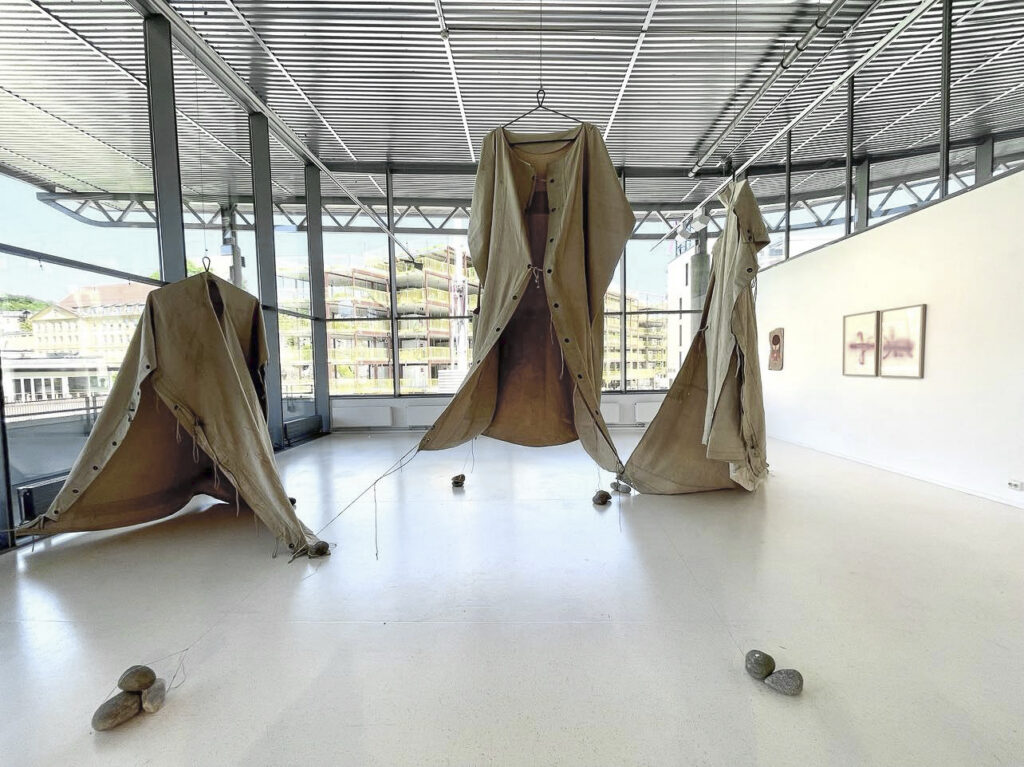
2022 Sørlandsutstillingen, Annual exhibition for the southern region, Norway. 
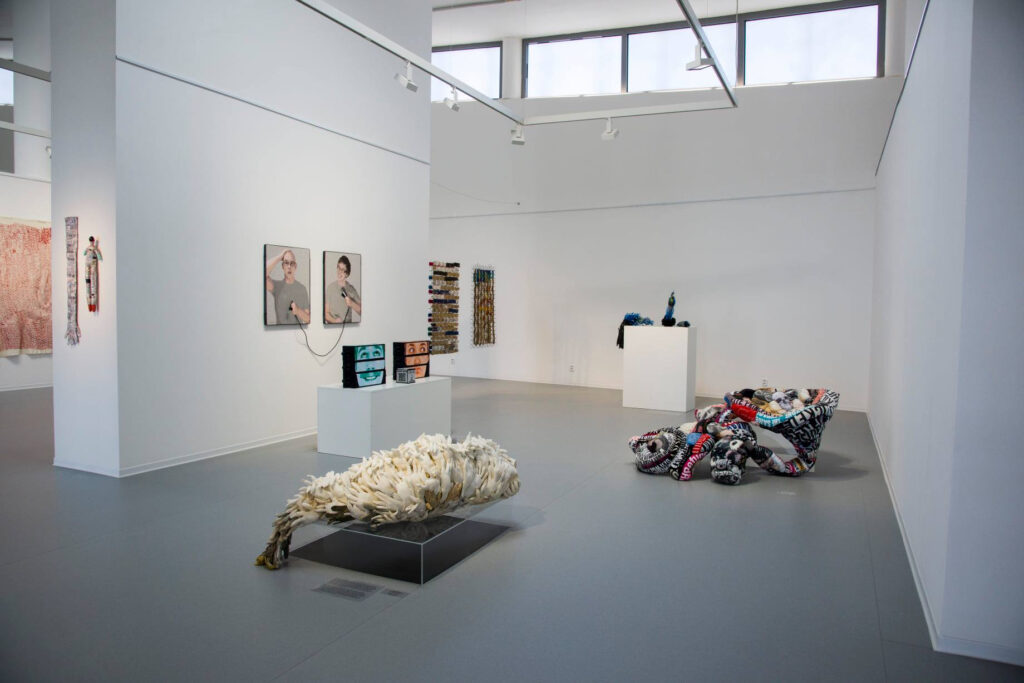
2021/2022. Danubiana Meulensteen Art Museum, 6th “Textile art of today” , triennale , Slovak Republic, Hungary & Polan 當代織品藝術三年展


2021 Socle Du Monde Biennale, Herning, Denmark 丹麥「Socle du Monde 雙年展」 
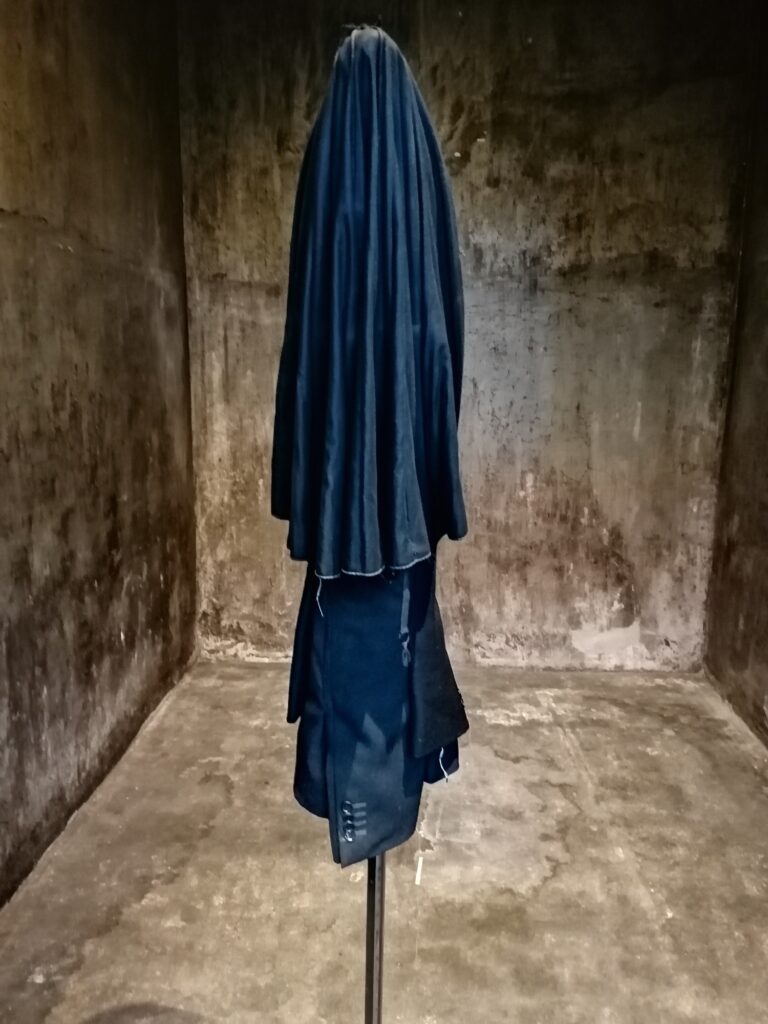
2021 Socle Du Monde Biennale, Herning, Denmark 丹麥「Socle du Monde 雙年展」

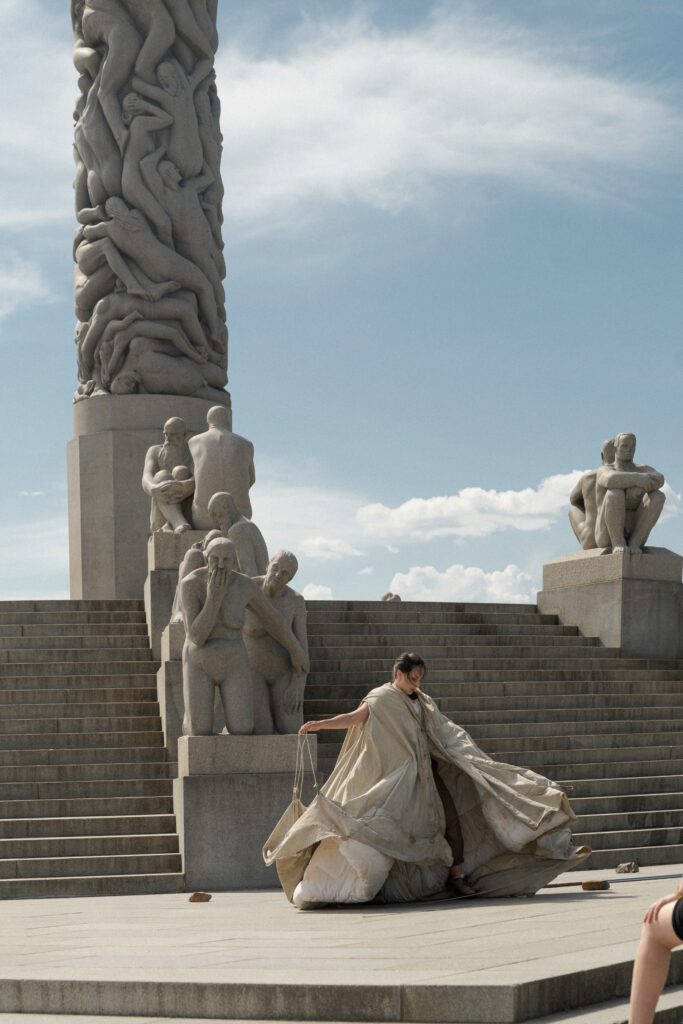
Collective Oslo, performance The Vigeland Park 奧斯陸跨界藝術表演計畫 
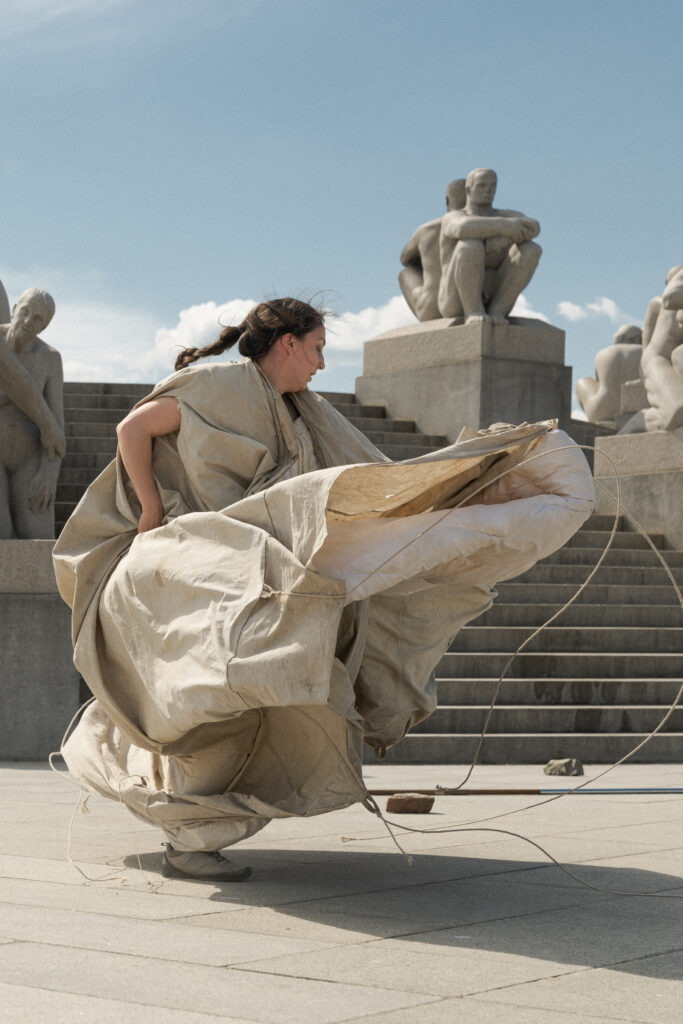
Collective Oslo, performance The Vigeland Park 奧斯陸跨界藝術表演計畫

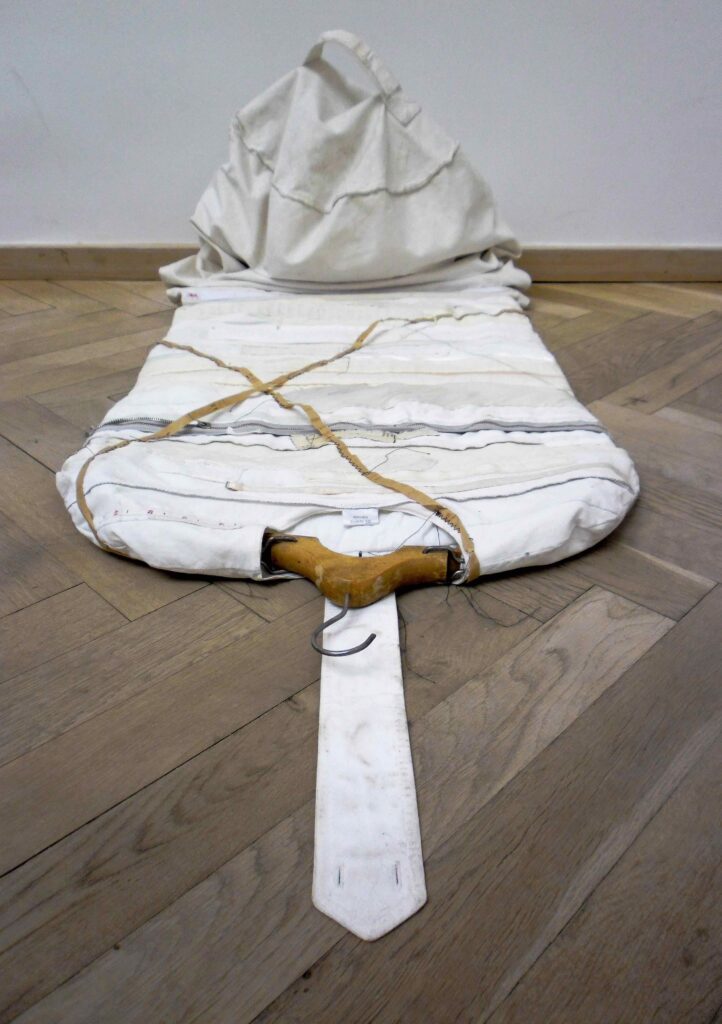
2020 Royal Society of Sculptors Summer Exhibition , London, UK 倫敦皇家雕塑家協會夏季展 
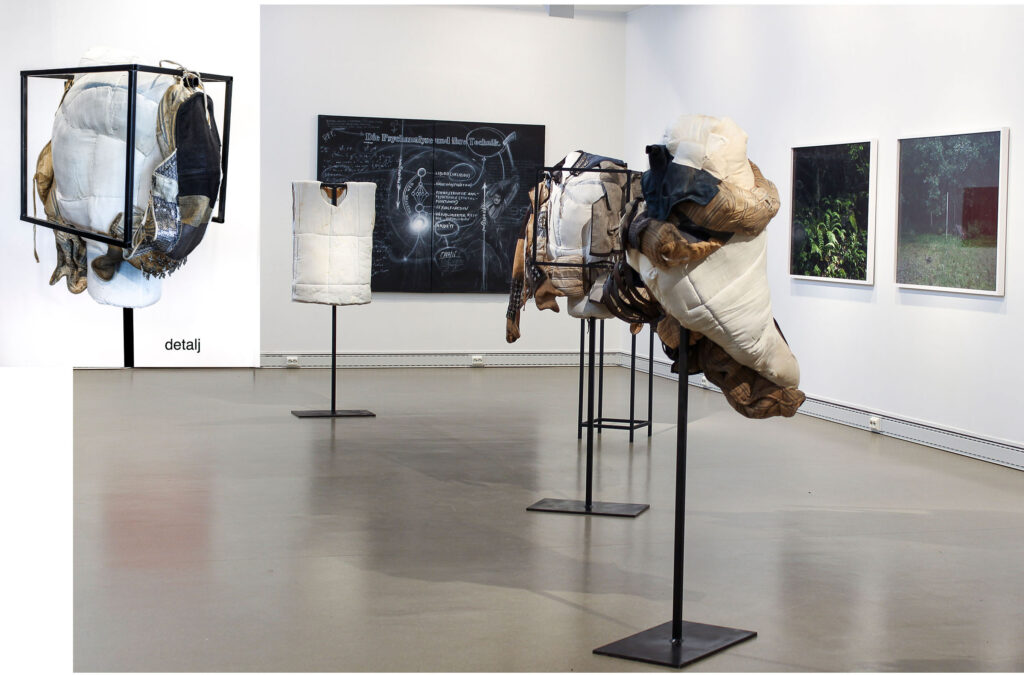
2019 “Østlandsutstillingen 40 år” Kongsberg Kunstforening ,Konsberg 藝術協會

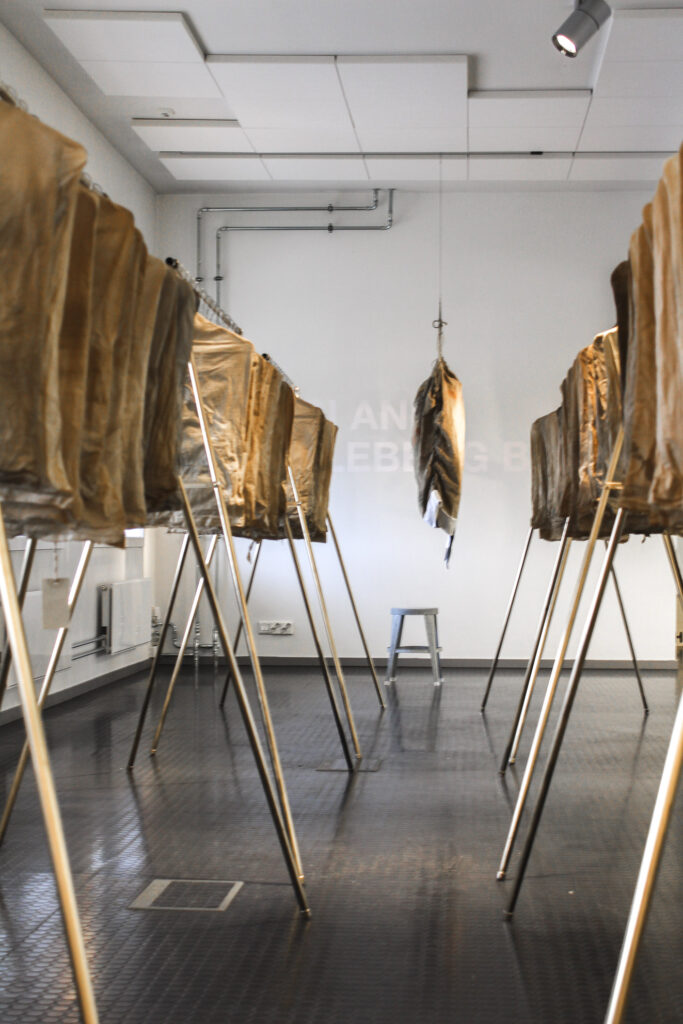
2017 Uncontaminated, Mellomstasjonen, The National Museum 國家美術館 
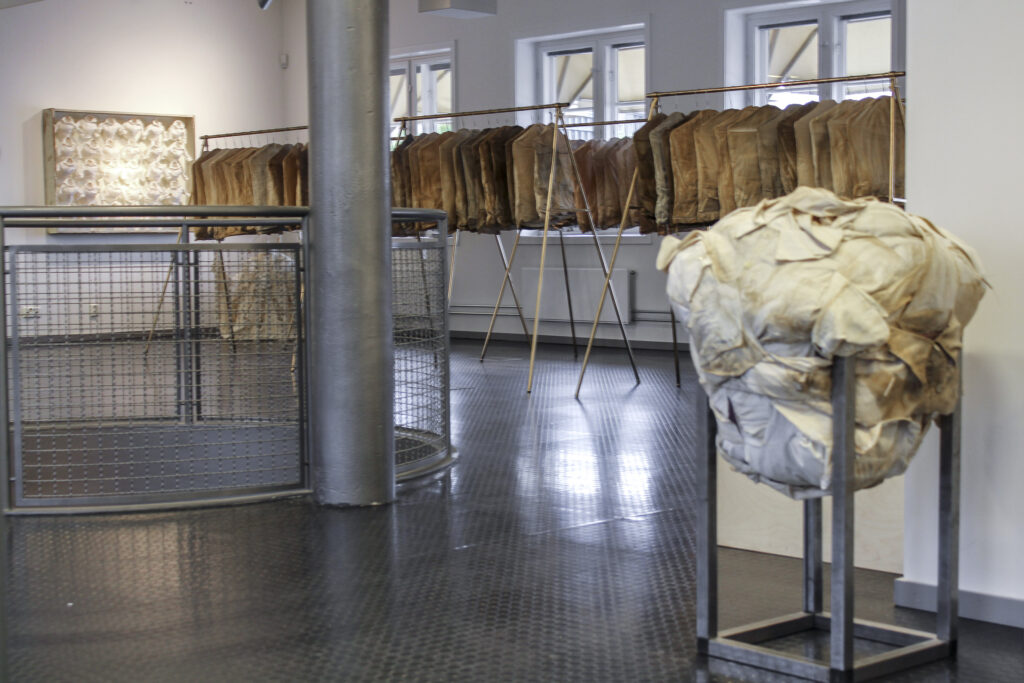
2017 Uncontaminated, Mellomstasjonen, The National Museum 國家美術館
卡里.安妮.赫勒伯格.巴赫里Kari Anne Helleberg Bahri童年因家境不富裕,裁縫師的母親常以舊衣物等易取得的布料材質進行設計,化腐朽為神奇,深深影響巴赫里Bahri對於織品興趣,驟逝的父親令她陷入孤立沈默、自我懷疑、感覺身體被牢籠所困,而唯有透過將碎片舊布、織補縫合再創造的過程,才找到可以發聲的方式。母親對她是媒材的啟發,而父親意象則反覆出現在她的創作內容中。她曾表示:「我運用衣服和布料做為溝通的語言,解放它們包裝身體的功能。」織布,有溫度的材質,衣物作為遮蔽身體的物件,與個人肌膚有著最親密的接觸,一旦新衣穿過之後,就不再是全新狀態,個人的心智狀態與情緒,都會在衣物上留下時間痕跡,它是自我私密的對話,同時也是個人對外標誌著自我於社會中的形象。
巴赫里Bahri善用手工縫製方式,與收集來的織布長時間相處,發掘纖维的細節,通過天然的棉、麻、毛料材質,選擇白色、或中性色彩呈現,認為藝術通常呈現生命中較沈重的層面,使用中性色彩可以不被愉悅或悲傷的情緒干擾影響,可以解放禁錮的身體,跳脫自我設限的困境,進而創造獨一無二的生命故事。以織線為畫筆,創作探討當下社會群體的限制(Limitations)、秩序(Restrictions)、期待(Expectations)、孤立(Isolation) 等議題,藉由現成物的混亂、被拋棄、瑕疵、腐朽、不完美的重新詮釋再造,提供觀者跳脫自我圈圈,立於客觀位置反思記憶經驗,從這樣的位置激發「過去我是誰」、「未來我是誰」、「我可以成為誰」的自我對話、思辨認知和妥協的過程。
二十世紀的織品藝術(Textile Art),藝術家運用纖維的韌性及織物連結身體的親密感,表現自身的立場,並與傳統的編織工藝做出區隔。德裔美國藝術家安妮・亞伯斯Anni Albers, 是第一位打破藝術與工藝界線的藝術家,她利用織品纖維的特性讓天然材料、合成線、金屬塑料融入掛毯作品,研究畫面的幾何佈局與畫面平衡,美國藝術家茱蒂絲・史考特Judith Scott以織品纏繞包裹作品聞名,創造一系列的日常生活的物件,鑰匙、塑膠管或購物車,線性圍繞狀態暗示著儀式與遊戲的過程。當代日本藝術家塩田千春 (Shiota Chiharu),以毛線及現成物組成的裝置藝術,帶領觀眾體驗人生的旅途,並將死亡的恐懼完整記錄下來。卡里.安妮.赫勒伯格.巴赫里Kari Anne Helleberg Bahri的作品,則有別於將編織作為個人生命的經驗再現,以舊布痕跡、手工縫線、縫合時間碎片,對抗社會共同體價值觀對單一個體影響,有著更為深刻細膩的詮釋。
作品 Circus (2017) 記憶中父親工作的既是小丑裝,也是馬戲團帳篷,勾起人前歡樂人後悲苦、笑中帶淚的共感經驗。作品Inception (2016)選用舊麻布袋縫線縫製而成,暗喻著懷胎過程的辛苦與新生的喜悅。作品Sleep tight (2014)將衣物束縛在盒中,一方面呈現身體受包裹的安全感,一方面也形成限制身體的無形框架。作品 General People (2013)則用各式不同的襯衫及外套組合的群體,表現社會集體的心理狀態,看似可愛的造型背後隱含質疑的反差。大型集合裝置Garment Bags (2016),由80件衣架衣袋組合,向著同一個方向整齊排列。人們對於什麼時期應該做什麼事有著共同的觀點,進而觸發某種期待亦是限制,表現其實人都害怕被孤立,也為符合社會期待而遵守秩序。
卡里.安妮.赫勒伯格.巴赫里Kari Anne Helleberg Bahri使用織品Textile art 作為說故事的媒介,表面上操作著破布、織品、織線、碎片等混亂的元素,實則深入解剖衣物痕跡感受的記憶溫度,與深刻的內心世界所隱藏的心理狀態,透過創作呈現喜怒哀樂情緒的人性微縮,她的藝術是批判性的和解,同時也是對於靈魂深處的關懷。


